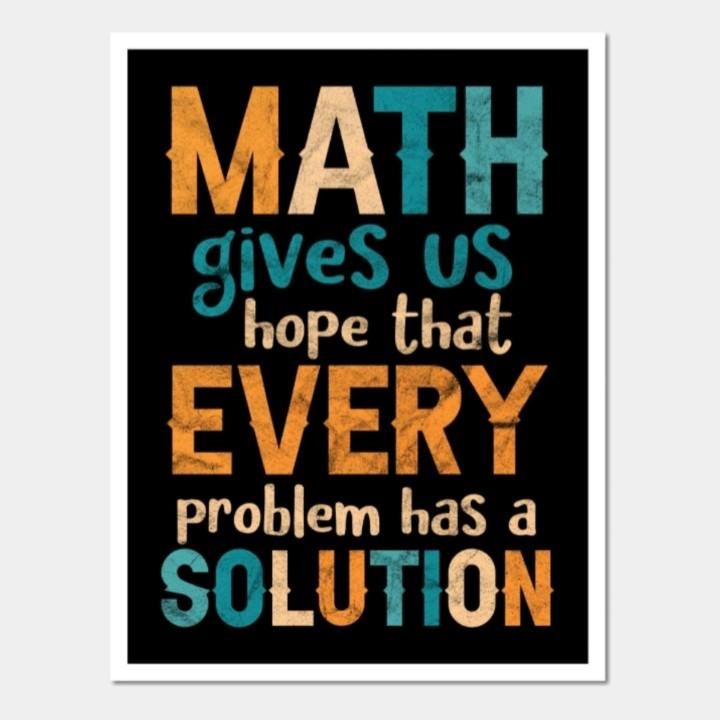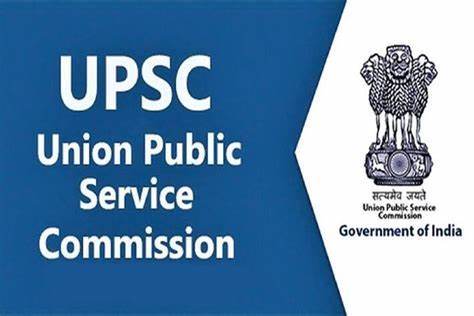INTRODUCTION:
The mathematics syllabus for the UPSC (Union Public Service Commission) examination is meticulously designed to evaluate the analytical and problem-solving skills of candidates aspiring for various positions in the civil services. Mathematics, as an optional subject, offers a unique advantage due to its objective nature and high scoring potential. The syllabus covers a broad spectrum of topics, ranging from the fundamentals of algebra, calculus, and geometry to more advanced areas such as real analysis, complex analysis, and linear programming. This diverse curriculum not only tests the candidates’ mathematical prowess but also their ability to apply theoretical concepts to solve real-world problems, making it an essential component of the UPSC examination framework.

The UPSC syllabus encompasses:
Quadratic Equations: Solutions of quadratic equations, the relation between roots and coefficients, and the formation of quadratic equations with given roots.
Complex Numbers: Basic operations, modulus, argument, cube roots of unity, and their properties.
Matrices: Concepts of matrices, determinant, inverse, rank, solution of simultaneous linear equations using matrix methods.
Determinants: Properties, solution of equations, Cramer’s rule.
Linear Equations: System of linear equations, their solutions using matrix methods.
Calculus
Calculus, the mathematical study of continuous change, covers:
Limits and Continuity: Limit of functions, continuity and types of discontinuities.
Differentiation: Derivatives of various types of functions, including implicit differentiation and applications for finding local maxima and minima.
Integration: Indefinite and definite integrals, techniques of integration, and applications in calculating areas and volumes.
Differential Equations: Formation and solution of differential equations, applications in solving real-world problems.
Linear Algebra
Linear Algebra focuses on vector spaces and linear mappings. Topics include:
Vector Spaces: Definitions, properties, subspace, basis, dimension.
Linear Transformations: Kernel and range, matrix representation, similarity, eigenvalues and eigenvectors.
Real Analysis
Real Analysis explores the properties of real numbers and functions. The syllabus covers:
Sequences and Series: Convergence, tests for convergence, series of positive terms, absolute and conditional convergence.
Continuity: Definitions, properties, uniform continuity.
Differentiability: Differentiable functions, Rolle’s Theorem, Mean Value Theorems.
Riemann Integration: Definite integrals, properties, and applications.
Ordinary Differential Equations (ODEs)
ODEs involve equations with derivatives of unknown functions. Topics include:
First-order Differential Equations: Solutions, applications to real-world problems.
Second and Higher-order Linear Differential Equations: With constant coefficients, methods of solution, applications.
Partial Differential Equations (PDEs)
PDEs involve equations with partial derivatives. Covered topics are:
First-order PDEs: Method of characteristics, basic concepts and solutions.
Second-order PDEs: Classification, methods of solution, applications in physics and engineering.
Numerical Analysis and Computer Programming
This section focuses on numerical methods and programming for solving mathematical problems. Topics include:
Numerical Methods: For solving algebraic and transcendental equations, numerical differentiation and integration.
Computer Programming: Basic programming concepts in C++, writing simple programs related to mathematical problem-solving.
Probability and Statistics
This area deals with the analysis of random events and data. It includes:
Probability Theory: Axioms, conditional probability, Bayes’ theorem.
Random Variables: Discrete and continuous, probability distributions, expectation and variance.
Statistical Inference: Estimation, testing of hypotheses, confidence intervals.
Linear Programming
Linear Programming is a method for optimizing a linear objective function. Topics are:
Linear Programming Problem (LPP): Formulation, graphical solution method.
Simplex Method: Algorithm, applications.
Duality: Theory and applications.
Mathematical Methods
This encompasses various tools for solving problems across scientific disciplines. Topics include:
Vector Analysis: Gradient, divergence, curl, and their applications.
Complex Analysis: Analytic functions, Cauchy’s integral theorem, residues.
Fourier Series: Expansion of periodic functions, applications in solving differential equations.
Laplace Transforms: Properties, inverse transforms, and applications to solve ODEs.
Numerical Methods: For solving ODEs and PDEs, implementation in computational software.
The syllabus for Mathematics in the UPSC examination encompasses various topics from different branches of mathematics. Here’s a detailed breakdown of the Mathematics syllabus for UPSC exams:
- Algebra:
- Quadratic Equations: Solutions, relations between roots and coefficients, formation of quadratic equations with given roots.
- Complex Numbers: Basic operations, modulus, argument, cube roots of unity, properties.
- Matrices: Concepts, determinant, inverse, rank, solution of simultaneous linear equations using matrix methods.
- Determinants: Properties, solutions of equations, Cramer’s rule.
- Linear Equations: System of linear equations, solutions using matrix methods.
- Calculus:
- Limits and Continuity: Limit of functions, continuity, types of discontinuities.
- Differentiation: Derivatives of various types of functions, including implicit differentiation, applications for finding local maxima and minima.
- Integration: Indefinite and definite integrals, techniques of integration, applications in calculating areas and volumes.
- Differential Equations: Formation and solution of differential equations, applications in solving real-world problems.
- Linear Algebra:
- Vector Spaces: Definitions, properties, subspace, basis, dimension.
- Linear Transformations: Kernel and range, matrix representation, similarity, eigenvalues and eigenvectors.
- Real Analysis:
- Sequences and Series: Convergence, tests for convergence, series of positive terms, absolute and conditional convergence.
- Continuity: Definitions, properties, uniform continuity.
- Differentiability: Differentiable functions, Rolle’s Theorem, Mean Value Theorems.
- Riemann Integration: Definite integrals, properties, and applications.
- Ordinary Differential Equations (ODEs):
- First-order Differential Equations: Solutions, applications to real-world problems.
- Second and Higher-order Linear Differential Equations: With constant coefficients, methods of solution, applications.
- Partial Differential Equations (PDEs):
- First-order PDEs: Method of characteristics, basic concepts, and solutions.
- Second-order PDEs: Classification, methods of solution, applications in physics and engineering.
- Numerical Analysis and Computer Programming:
- Numerical Methods: For solving algebraic and transcendental equations, numerical differentiation and integration.
- Computer Programming: Basic programming concepts in C++, writing simple programs related to mathematical problem-solving.
- Probability and Statistics:
- Probability Theory: Axioms, conditional probability, Bayes’ theorem.
- Random Variables: Discrete and continuous, probability distributions, expectation and variance.
- Statistical Inference: Estimation, testing of hypotheses, confidence intervals.
- Linear Programming:
- Linear Programming Problem (LPP): Formulation, graphical solution method.
- Simplex Method: Algorithm, applications.
- Duality: Theory and applications.
- Mathematical Methods:
- Vector Analysis: Gradient, divergence, curl, and their applications.
- Complex Analysis: Analytic functions, Cauchy’s integral theorem, residues.
- Fourier Series: Expansion of periodic functions, applications in solving differential equations.
- Laplace Transforms: Properties, inverse transforms, applications to solve ODEs.
- Numerical Methods: For solving ODEs and PDEs, implementation in computational software.
This syllabus is designed to assess candidates’ understanding and application of mathematical principles across various fields, providing a comprehensive foundation for civil service positions and other roles requiring mathematical expertise.
Here’s the continuation of the detailed syllabus for Mathematics in the UPSC examination:
- Analytical Geometry:
- Cartesian coordinate system: Distance and division formulae, equation of a line, intersection of lines, angles between two lines, conditions for concurrence of three lines, distance of a point from a line.
- Locus problems: Equation of a circle with a given center and radius, condition that a general equation of the second degree in x, y may represent a circle, equation of a circle in the parametric form, condition for two intersecting circles to be orthogonal.
- Transformation of axes: Change of origin and change of axes (rotation is excluded).
- Statics:
- Composition and resolution of forces, moments and couples, resultant of set of coplanar forces and conditions of equilibrium, determination of centroids in simple figures, problems involving friction.
- Dynamics:
- Velocity and acceleration, relative velocity, Newton’s laws of motion, motion under uniform and non-uniform acceleration, motion under gravity, projectile motion, motion under variable forces, principles of conservation of momentum and energy.
- Vector Analysis:
- Scalar and vector fields, gradient, divergence, curl, line integral, surface integral, volume integral, Green’s theorem, Stokes theorem, Gauss theorem (without proof).
- Linear Programming:
- Formulation of linear programming problems, graphical method of solution for problems in two variables, feasible and infeasible regions, feasible and optimal solutions, basic feasible solutions, transportation and assignment problems, duality and its applications, economic interpretation of duality.
- Numerical Analysis:
- Solution of algebraic and transcendental equations: Bisection, Regula falsi, Newton-Raphson, and Secant methods, solution of system of linear equations: Gauss elimination, Gauss-Jordan, and Matrix inversion methods.
- Interpolation: Lagrange’s and Newton’s interpolations, forward and backward differences, divided differences, interpolation with unevenly spaced points.
- Numerical differentiation and integration: Trapezoidal rule, Simpson’s 1/3rd and 3/8th rules, Weddle’s rule, Gaussian integration formula.
- Solution of ordinary differential equations: Euler and Runge-Kutta methods.
This comprehensive syllabus covers a broad range of mathematical topics and their applications, providing candidates with a strong foundation in mathematics relevant to various fields including engineering, economics, and science, which are crucial for success in the UPSC examination and beyond.
Certainly! Let’s continue with the detailed syllabus for Mathematics in the UPSC examination:
- Group Theory:
- Basic concepts of groups, subgroups, cyclic groups, permutation groups, normal subgroups, quotient groups, homomorphisms, isomorphism theorems, Cayley’s theorem.
- Ring Theory:
- Definition and examples of rings and fields, subrings, ideals, integral domains, quotient rings, polynomial rings and unique factorization domains.
- Field Theory:
- Extension fields, algebraic and transcendental extensions, finite fields, splitting fields, algebraic closure, and the fundamental theorem of Galois theory.
- Metric Spaces:
- Definitions and examples of metric spaces, open and closed sets, convergence of sequences, completeness, compactness, connectedness, continuity and uniform continuity, equicontinuity, and the Arzela-Ascoli theorem.
- Topological Spaces:
- Definitions and examples of topological spaces, open and closed sets, convergence of sequences, continuity, compactness, connectedness, bases, subspaces, product spaces, quotient spaces, and the Hausdorff property.
- Measure Theory:
- Measures, measurable sets, Lebesgue measure on the real line, Lebesgue measurable sets, measurable functions, Lebesgue integral, convergence theorems, and product measures.
- Functional Analysis:
- Normed vector spaces, Banach spaces, inner product spaces, Hilbert spaces, linear operators, bounded linear operators, dual spaces, weak and weak-* topologies, and the Hahn-Banach theorem.
- Differential Geometry:
- Curves in space, curvature and torsion, Frenet frames, surfaces in space, first and second fundamental forms, Gaussian curvature, geodesics, parallelism, and the Gauss-Bonnet theorem.
- Algebraic Topology:
- Homotopy, fundamental group, covering spaces, homology groups, cellular homology, singular homology, and applications to the classification of surfaces and the Brouwer fixed-point theorem.
This extended syllabus covers advanced topics in mathematics, including abstract algebra, topology, measure theory, functional analysis, and differential geometry. It reflects the depth of mathematical knowledge required for candidates aiming for civil service positions and other roles that demand a high level of mathematical proficiency.
CONCLUSION:
The Mathematics syllabus for the UPSC examination is comprehensive and challenging, designed to assess a wide range of mathematical skills and knowledge. It requires a deep understanding of mathematical concepts, along with rigorous practice and problem-solving capabilities. As candidates navigate through the extensive topics, they develop analytical thinking and precision, qualities that are invaluable for a successful career in the civil services. The syllabus, therefore, not only serves as a basis for testing in the examination but also prepares candidates for the analytical and problem-solving demands of their future roles in public service.

For Detailed Information ; CLICK HERE
For the 2024 UPSC Calendar; CLICK HERE